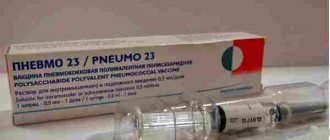Fear of vaccines is largely due to outdated beliefs about vaccines. Of course, the general principles of their action have remained unchanged since the time of Edward Jenner, who was the first to use vaccination against smallpox in 1796. But medicine has moved very far forward since then. So-called “live” vaccines, which use a weakened virus, are still used today. But this is only one of the types of means designed to prevent dangerous diseases. And every year – in particular, thanks to the achievements of genetic engineering – the arsenal of immunologists is replenished with new types and even types of vaccines.
Live vaccines
They require special storage conditions, but provide lasting immunity to the disease after, as a rule, one vaccination. For the most part, they are administered parenterally, that is, by injection; the exception is the polio vaccine. Despite all the benefits of live vaccines, their use is associated with some risks. There is always a chance that a strain of the virus will be sufficiently virulent and cause the disease that the vaccination was supposed to protect against. Therefore, live vaccines are not used in people with immunodeficiency (for example, HIV carriers, cancer patients).
Vaccination, or, as it is also called, inoculation, is the process of introducing a vaccine into the body. Vaccines historically got their name from the Latin word vacca, meaning cow. In 1798, the English physician Jenner noticed that if the contents of a cow's pox were injected into a person's skin, he would not get smallpox.
Vaccines are drugs that help create artificial specific immunity acquired during the vaccination process and necessary to protect the body from a specific pathogen.
Vaccines are made through complex biochemical processes from microorganisms, their metabolic products or individual components of a microbial cell.
A vaccine preparation containing certain doses of the pathogen, once in the human body, collides with blood cells - lymphocytes, resulting in the formation of antibodies - special protective proteins that remain in the body for a certain period of time. This could be a year, five years or more. This is associated with the need for repeated vaccinations - revaccination, after which stable long-term immunity is formed.
During a subsequent “meeting” with a pathogenic microorganism, antibodies recognize it and neutralize it, and the person does not get sick.
Each country in the world has its own calendar of preventive vaccinations. In our country, until recently, it included seven infections: tuberculosis, diphtheria, tetanus, whooping cough, measles, mumps (mumps) and polio. Since 1997, two more vaccines have been added to the compulsory vaccination schedule - against hepatitis B and rubella.
Vaccination is a preventive measure designed to protect against an infectious disease. Thanks to vaccination, many diseases have become completely harmless; we learn about the existence of some of them only from medical textbooks.
The first vaccination was carried out in 1796. The English doctor E. Dhenner inoculated several patients with cowpox, as he noticed that people who had cowpox did not get smallpox. The last case of smallpox was reported in 1977.
Infection is the introduction of pathogens into the human body, accompanied by a complex of reactive processes. After the penetration of microbes, the body begins to “protect itself” - it produces antibodies that actively “fight” pathogens.
After an infection, antibodies remain in the body, i.e. immunity is developed. If pathogens of the same disease enter the body again, antibodies neutralize them. A person who has suffered a certain infectious disease develops immunity to it, i.e. its natural “vaccination” occurs.
After suffering from certain diseases, lifelong immunity is developed. Sometimes vaccination must be repeated several times to develop lasting immunity.
Some vaccines only last for a few years and therefore need to be repeated. Before doing this, you should consult your family doctor.
Types of immunization
The basis of any vaccination is the use of natural mechanisms occurring in the human body’s immune system. A person is injected with either weakened pathogens of a certain infectious disease, as a result of which the body begins to produce antibodies (active immunization), or immediately ready-made antibodies against a given disease (passive immunization).
Active immunization is the administration of a vaccine to form long-term protection for the body. Live vaccines are contraindicated in patients receiving immunosuppressants, fever, or pregnancy.
When carrying out active immunization, the following is used:
- live
- or non-live vaccines.
Live vaccines are pathogens that have retained the ability to reproduce, but their effect is very weak. This vaccine is used against smallpox, polio, tuberculosis, yellow fever, measles, rubella and mumps.
A non-live vaccine contains pathogens that cannot reproduce but remain active enough to produce antibodies in the body. This vaccine is used to vaccinate against cholera, typhoid, paratyphoid, whooping cough and influenza.
There are vaccines against diseases whose pathogens produce poison (toxin). Such pathogens primarily include the pathogens of diphtheria and tetanus. The toxins they produce are neutralized and converted into toxoids used as vaccines.
Passive immunization creates temporary immunity in the body by introducing foreign immune substances such as antibodies. Doctors often use this type of immunization when they suspect tetanus.
Passive immunization weakens a possible infection, while active immunization protects against future infection. If diphtheria is suspected, simultaneous immunization is also used. Sometimes autovaccination is used for infectious diseases. An autovaccine, prepared by isolating bacteria from a sick individual and culturing them, is reintroduced to the patient to stimulate the formation of antibodies.
Passive immunization based on the introduction to the patient of foreign antibodies taken from vaccinated people or animals. The effect of such a vaccine begins in a few hours and ends after four weeks, since foreign antibodies, having entered the human body, are broken down.
Passive immunization is usually used in cases where a person has already become infected with a certain disease or the likelihood of infection is very high. A classic example of the use of passive immunization is vaccination against rabies.
Passive immunization does not protect against a specific disease, but only softens its course. Immune sera used to treat tetanus, measles, rubella, mumps, hepatitis and rabies are obtained from vaccinated people. Animal immune serum is used to treat diphtheria, botulism, gas gangrene, and poisoning by snake venoms.
A combination of immediate but short-lived immunity through passive immunization and long-lasting immunity through active immunization is possible. This type of immunization is called simultaneous immunization.
When is vaccination necessary?
The answer to this question mainly depends on the circumstances of the individual person's life.
At-risk groups
People who have to stay outdoors for a long time need to be vaccinated against tick-borne encephalitis.
Agricultural and forestry workers should be vaccinated not only against tetanus, but also against all zoonotic diseases.
People with weakened immune systems are advised to get flu shots.
If you are going to visit tropical countries, find out what diseases you need to be vaccinated against.
Vaccination of children
Children must be vaccinated against childhood infectious diseases. Vaccinations are recommended in accordance with a special vaccination schedule for children.
Is vaccination dangerous?
In children, the vaccine often causes a mild vaccine reaction, for example, a slight increase in body temperature, moderate soreness, redness and swelling at the injection site, and loss of appetite. Severe lesions are less common and are usually seen in children with chronic illnesses.
Such children are vaccinated in a hospital under the supervision of a doctor.
The most dangerous is passive immunization, when used, a foreign protein enters the patient’s body. If you have hypersensitivity to a foreign protein, serum sickness may occur. In mild cases, symptoms of serum sickness such as enlarged lymph nodes and urticaria are observed. In addition, allergic shock is possible, which is a common cause of death for the patient.
Who pays for vaccination costs?
Some vaccination costs (for example, for routine childhood vaccinations or tetanus vaccine in case of injury, etc.) are partially covered by the health insurance fund. Other special vaccines, for example, when traveling abroad, must be paid for independently.
Vaccination when traveling abroad
Before traveling to exotic tropical destinations (such as African or South American countries), you should obtain detailed information about required and recommended vaccinations.
The World Health Organization annually publishes requirements for the immune status of immigrants for all countries.
To clarify information about vaccinations, you can contact the embassy of a specific country.
National calendar of preventive vaccinations
Approved by Order of the Ministry of Health of the Russian Federation dated March 21, 2014 N 125n “On approval of the national calendar of preventive vaccinations and the calendar of preventive vaccinations for epidemic indications.” Annex 1
Immunization of the population in our institution
In Kerch Hospital No. 1 there is a treatment room No. 29, where immunization of the population is carried out.
All vaccinations are carried out free of charge, after consultation with a specialist doctor.
Invitations for vaccinations are carried out by local services, medical examination rooms, and preventive rooms.
Head outpatient department of clinical hospital No. 1 - Sharonova Irina Nikolaevna
Read also:
- Vaccination safety
- The procedure for professional vaccinations for citizens
- Vaccination. What you need to know
- Immunoprophylaxis of infectious diseases. Memo
- WHO. False ideas about vaccination
- “On immunoprophylaxis of infectious diseases”
- Recommendations for travelers
- National calendar of preventive vaccinations
- April 24-30 – World Immunization Week 2021
- Vaccine-preventable diseases
- Legislation on vaccine prevention for adults in the Russian Federation
- List of works requiring mandatory professional vaccinations
- Refusal to vaccinate
- Contraindications to vaccination
- Risk factors of the labor process and vaccination of the adult working population
- Vaccination against measles, rubella, chickenpox
- Vaccination against tick-borne encephalitis
- Vaccination against hepatitis B
- Vaccination against diphtheria and tetanus
- Vaccination against hepatitis A
- Vaccination against pneumococcal infection
- Flu vaccination
- Do you know what a vaccination is?
- European Immunization Week 2021: Vaccines deliver results!
- Vaccination against measles, rubella, chickenpox
Subunit vaccines
They are effective and safe - they use only fragments of the antigen of a pathogenic microorganism sufficient to ensure an adequate immune response of the body. May contain particles of the microbe itself (vaccines against Streptococcus pneumoniae and meningococcus type A). Another option is recombinant subunit vaccines created using genetic engineering technology. For example, the hepatitis B vaccine is made by introducing part of the virus's genetic material into baker's yeast cells.
The essence of vaccination
Vaccination is a plan of action aimed at protecting the body of an adult or child from harmful microorganisms. The method is based on the ability of immunobiological solutions to train the immune system by remembering infectious agents or toxoids and instantly destroying them during subsequent infection.
Vaccination is a multi-level action, conditionally divided into several stages:
- identification of persons for whom vaccination is recommended;
- choice of vaccine preparation (live, inactivated, toxoid);
- scheduling vaccinations;
- administration of vaccines according to the approved plan;
- control of results;
- prevention and treatment of possible post-vaccination complications or adverse reactions (pathological reactions are most often observed after the administration of tetanus toxoids, diphtheria bacillus in combination with a pertussis component).
Modern vaccines are highly effective and reliable preparations with specific antigens (microorganisms, their fragmentary parts, toxoids) for the prevention of dangerous infectious pathologies and other diseases. They are created through the use of modern genetic engineering developments. They contribute to the rapid formation of protective resistance to various types of painful conditions. Vaccines can be used for vaccine therapy of infection after patient contact with a potential pathogen.
2-3 years
| Vaccine name | Purpose | Quantity | Price in rub. | Sum |
| "Menactra" | from meningococcal infection | 1 | 6000 | 6000 |
| "Grippol+" | from the flu | 1 | 1100 | 1100 |
| Carrying out and checking the Mantoux test | 1 | 900 | 900 | |
| Cost of the annual vaccination program: 8,000 rubles | ||||
7-8-9-10-11-12-13 years
Annually:
| Vaccine name | Purpose | Quantity | Price in rub. | Sum |
| "Grippol+" | from the flu | 1 | 1100 | 1100 |
| Carrying out the Mantoux reaction | 1 | 900 | 900 | |
| Price | 2000 rub | |||
3-4-5-6 years
Annually:
| Vaccine name | Purpose | Quantity | Price in rub. | Sum |
| "Grippol+" | from the flu | 1 | 1100 | 1100 |
| Carrying out and checking the Mantoux test | 1 | 900 | 900 | |
| Price | 2000 rub | |||
Situational:
- “Tick-e-vac” (before traveling to areas endemic for tick-borne encephalitis or at the request of parents starting from 1 year) – 2 times – 1500*2=3000 rub.
- Hepatitis A – 2 times – “Havrix-720” – 1500 RUR*2 = 3000 RUR










